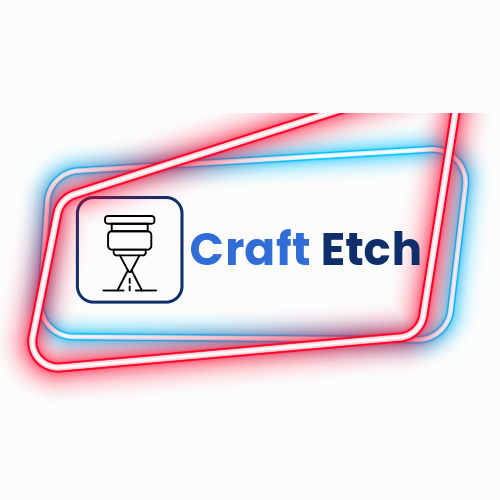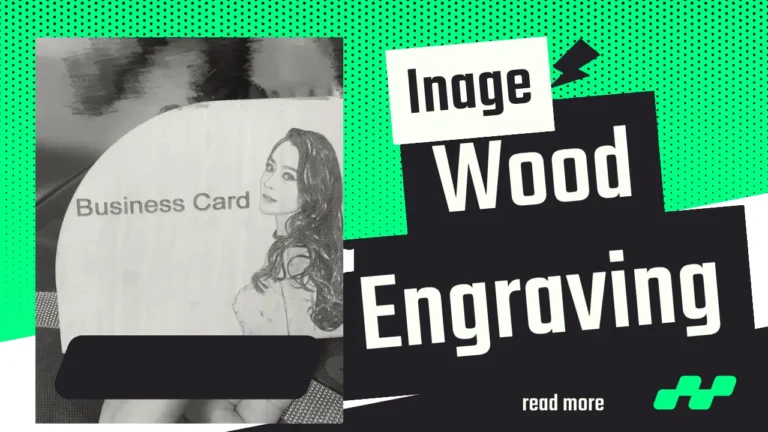Join Workshops
Physical Address
304 North Cardinal St.
Dorchester Center, MA 02124
Differences Between Carving, Etching, Engraving and Annealing
In simple words, both carving & etching are the two types of engraving. Etching represents creating patterns on the surface of the material whereas carving refers to 3d engraving, by removing material from the horizontal & vertical movement and visualizing the pattern in a three-dimensional way.
Laser annealing on the other hand refers to a metal marking process of placing any designs or patterns on metal by changing the metal properties, not melting or removing layers. The main difference between annealing and engraving is that the engraving process involves melting or removing a layer of the metal and the annealing only changes metal properties.
We will keep it short and to the point.

Key differences of laser carving, engraving and marking is shown in the table below, we will clarify the concept of annealing on the later part.
| Feature | Laser Carving | Laser Etching | Laser Engraving |
|---|---|---|---|
| Definition | Removal of material to create deep, three-dimensional designs. | Surface-level marking to create designs without significant depth. | Removal of material to create detailed and precise designs with some depth. |
| Depth | Deep, often creating a 3D effect | Very shallow, surface-level | Moderate depth, deeper than etching but shallower than carving |
| Applications | Sculptures, signage, artistic pieces | Marking logos, serial numbers, barcodes | Personalization of items, detailed artwork, industrial parts |
| Materials | Wood, acrylic, some metals | Metals, glass, ceramics, plastics | Metals, wood, plastics, leather, glass |
| Detail Level | Lower detail due to deeper cuts | High detail with fine lines and minimal depth | High detail with precise lines and moderate depth |
| Speed | Slower due to the depth of cuts | Fast, as it only marks the surface | Moderate speed, balancing depth and detail |
| Durability | Highly durable due to the depth | Less durable as it is only surface-level | Durable, more than etching but less than carving |
| Use Cases | Creating textured surfaces and reliefs | Marking identification codes, logos, decorative patterns | Creating personalized items, detailed designs, and intricate patterns |
| Visual Impact | Strong visual and tactile impact | Subtle visual impact | Clear and precise visual impact |
What is Laser engraving?
Laser engraving is the process where a laser machine uses its laser beam to burn/melt/vapourize a layer of the material to draw or mark any design or pattern.
In simple words, engraving represents drawing but with a laser beam.
Here’s an example of laser cutting & engraving.
Laser engraving example:

The left picture refers to laser cutting where the powerful laser beam was used to cut the wood at a given shape and dimension.
The second image above is an example of laser engraving where the laser drew the picture over a woodpiece.
What is Laser Etching?
Etching represents removing a portion of the layer of the material to visualize any designs.
Earlier, people used to manually etch leather and now the laser does the same.
In simple lines, laser etching is a technique in which the laser beam removes a layer or any portion of the material to put some design or pattern.
Below is an example of laser etching:

In the above image, a powerful laser etched a design onto a leather notebook.
What is carving?
Carving is commonly used with CNC machines where a metal tool cuts the wood from deep to make any designs on wood.
So, laser curving is the same thing, just a precision laser replacing the CNC. That’s it.
In simple words, laser carving refers to 3d laser engraving where a precision laser engraves from the depth of the workpiece to give it a 3d shape.
Here’s an example of laser carving:

The item in the above picture is a brass coin. A fiber laser machine was used to perform the carving. In other words, you may call it a 3d laser engraving.
Is laser engraving and marking the same?
In a nutshell, laser marking refers to when any laser puts any drawing or pattern over something without removing/melting/vaporizing its layer. So, the marking won’t have any dig out rather there will only be some drawings or designs.
Here’s an example of laser marking:

Another way of laser marking in metal is called laser annealing. Annealing is a way of metal marking where the laser beam creates an atomic reaction on the metal to draw something.
Annealing does not involve melting or vapourising anything.
What is laser annealing?
In the annealing process, a laser beam heavily heats the upper layer of the metal which causes sudden changes of the metal atoms. Color annealing involves heating the metal at different temperatures that give the upper layer a colored pattern.
Normally, annealing is applied to Marking identification marks (serial numbers, brand name, date, etc) on the metal parts. The same process can also help to generate color engravings in the metal workpiece.
Here’s an example of laser annealing:

The main advantage of laser annealing is that the process is purely contactless. Since the laser does not establish any contact with the material, it does not need any pigment to place any markings on the metal. This is why laser annealing is treated as an environmental concept.
Moreover, through laser annealing, the metal workpiece can be laser marked either with the designs or any specific pattern that makes us add value to the metal items.
For example, companies are now expanding their marketing budgets on stainless steel marking rather than incurring the costs of printed gift material. Alternatively, the laser annealing process helped an entire industry to grow. As a reference, there is a study that concluded that 66% of people are willing to pay premium prices for sustainable products and the metal marking is purely sustainable.
Additionally, metal marking through annealing ensures maximum precision. Remember, this is the only non-contact way of placing QR codes on the metal water bottles!
Lastly, metal marking is the fastest way of placing patterns on metal surfaces which allows the business owners to earn more utilizing their machinery at best.
Does annealing change color?
Yes, laser annealing changes the metal atoms through heavy heat and oxidization that gives a portion of the metal a separate appearance.
This is often referred to as the metal color engraving where most of us get confused.
However, annealing cannot bring vibrant colors like the printers because the color here is just a reaction of the metal properties alteration.
For stainless steel, for example, the colors typically observed (in order of increasing temperature) are pale yellow, gold, bronze, purple, blue, light blue, and dark blue.
So, you cannot make a natural picture with the annealing but you can surely engrave a photo or place a scannable QR on metal with this process.
How does laser annealing differ from engraving?
In a nutshell, laser engraving involves melting a layer of metal whereas annealing refers to changing metal properties to create the pattern or color.
So, if you can feel any metal engraving with fingers and notice depth then it is an engraving. Alternatively, you can see or slightly feel the metal marking done through annealing but there would not be any layer melted or burnt.
Can you do annealing & engraving with the same laser machine?
Yes, this is possible. You may use fiber lasers that can engrave and anneal the metal.
You may also use the high-power CO2 lasers for annealing but CO2 lasers are not often used for this purpose since they generate powerful laser waves and the metal pieces reflect the laser beam in the opposite direction.
You may use the combination of (diode + infrared lasers) which effectively engraves and marks metal with the same machine.
Usually, fiber lasers are used for industrial purposes. You may take the example of Toyota which needs to mark all of its car parts with serial numbers. Whereas the other lasers can be used for crafting purposes.







